Kotaro Ishiguro

First, we try." An idea man who comes up with a plan.
Kotaro Ishiguro is a third-sector representative who runs a limestone cave and campground in Touma Town, and also works as a nature guide in the rich natural environment of the town. He is a man of ideas who takes action and puts into practice the slogans of the town of Taima, “tree education,” “food education,” and “flower education,” throughout the four seasons.
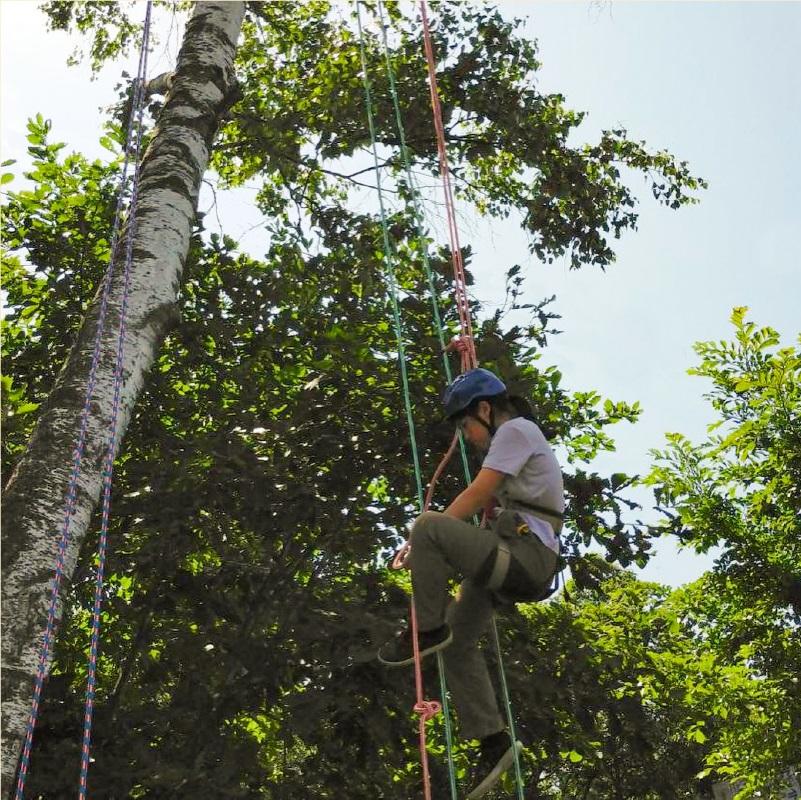
Observe first, and then get them interested.
Ishiguro coordinates nature experiences such as tree climbing (treeing) and snowshoeing. In tree climbing, which Ishiguro has organized as a tree education master and asked a friend to act as a guide, participants wear a safety belt called a “tree harness” attached to a rope specially designed for tree climbing, put on a helmet, and climb up a tree. Once you get the hang of it, you don’t need any special physical strength, and since it mainly uses leg strength, even children and women can try it without any difficulty.
Looking down from a height of 5 to 6 meters at the branches of a tree, which we usually look up at, we can discover many things, such as how the leaves are attached to the branches. I want people to get interested in forests and nature from there,” says Ishiguro. We don’t start by teaching them the names of trees and flowers, but rather let them observe them first. Once they become interested, it is best to have them actively learn by asking questions and doing research on their own.
Not only treeing, but also squatting down and peeking at flowers and plants growing near their feet is a good way to get them interested. The name of the flower is not important. The name of the flower is not important. The key to enjoying nature is to feel this way.
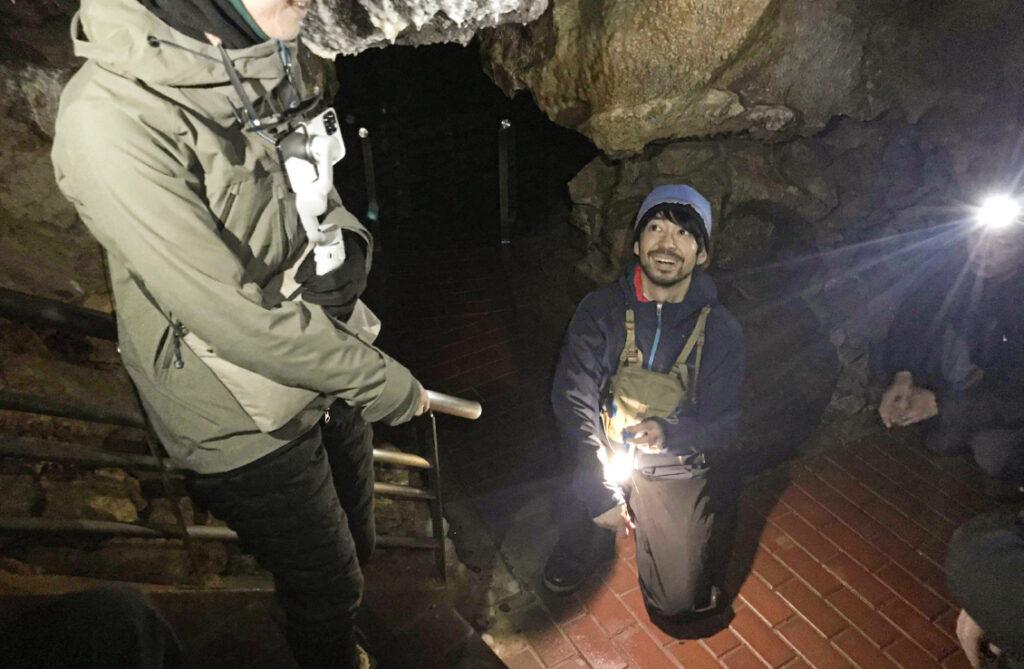
Night tours of limestone caves to sharpen your senses
The highlight of the Toma sightseeing tour, “Toma limestone caves” were created by the dissolving action of underground water over a mind-boggling period of time since the Jurassic Period, 150 million years ago. The 135-meter-long limestone caves are designated as a Hokkaido Natural Monument and are a true mystery of the earth with high academic value.
Normally, the Toma Cave closes at 5:00 pm. Mr. Ishiguro has devised a night tour of the cave. During the opening hours, the passageways and stalactites in the cave are illuminated with lights and the sound of a guide is played. During the night tour, the lights and audio guide are turned off and visitors proceed only by headlights. The tour takes about one hour to complete a course that normally takes about five minutes. In fact, few people have ever experienced true darkness in nature. On the tour, there is time to turn off the headlights and experience true darkness,” he says. Then, the only thing people rely on is their hearing. You will hear things that you could not hear before, such as the faint sound of water in the limestone caves.
Winter tours of the caves, which are closed during the winter, have also been introduced. Since the temperature inside the caves is warmer than the outside air (10-12°C even in winter), visitors can enjoy the fantastic view of the caves as if they were covered with mist. Snowshoeing to reach the entrance of the caves is another activity.
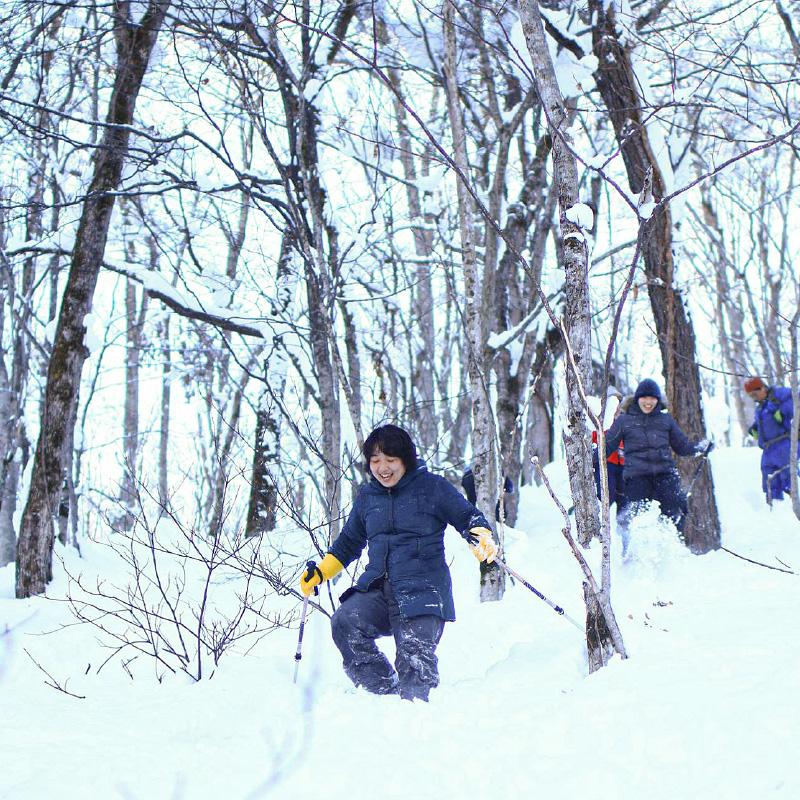
I want the locals to be proud of the nature in this town.
I grew up in an area of Sapporo with a lot of greenery, so I always liked nature, but after I started working, I gradually forgot how attractive it was because I couldn’t make time for myself anymore. Touma Town reminded me of that. There are many tourist resources here that impress people from outside. My goal is to make the locals proud of them.
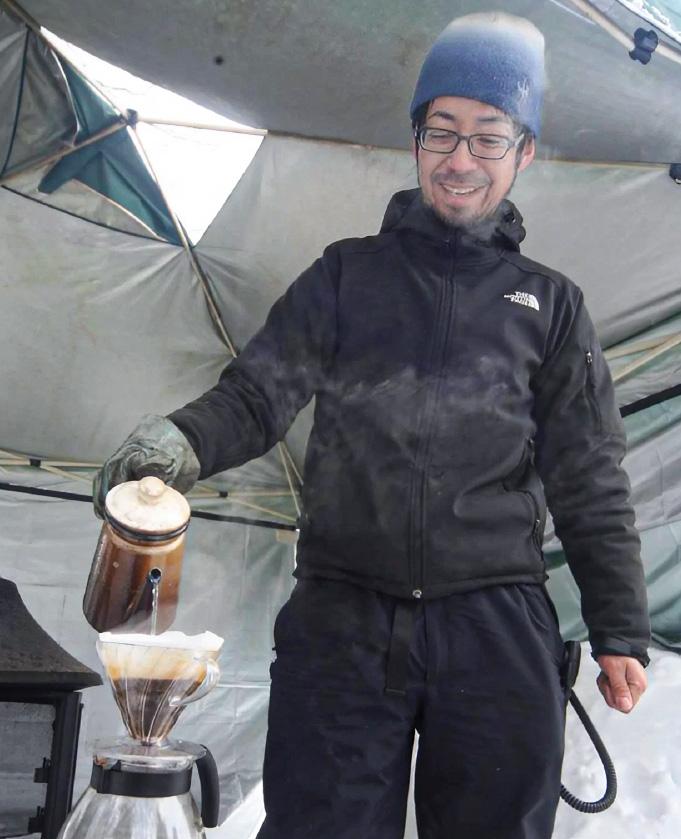
I want people to become familiar with the forest, which is full of “interesting” things.
Birch trees are generally of low value in the forestry industry due to their softness and susceptibility to insect damage, but the forests are full of fun things to do, such as collecting sap or making “forest color pencils” by inserting crayons into the cores of small branches. Birch bark, with its high oil content, was once used in Hokkaido as a stove stove fuel. Ishiguro says, “I think a guide’s job is not to explain knowledge, but to provide opportunities for people to be surprised and moved by nature. For Ishiguro, mountains and forests are a treasure trove of fun. He now reflects on the meaning of “play more,” which he learned from his senior guides.
We don’t have dynamic valleys like Sounkyo or beautiful hills like Biei, but we have the perfect location to experience nature. I would like to market it as ‘Sukima Tourism’ that combines the city and the great outdoors. I would be happy if people would take the time to go camping at Toma Sports Land on the weekends. I would be happy if people could enjoy it in that way,” he says.
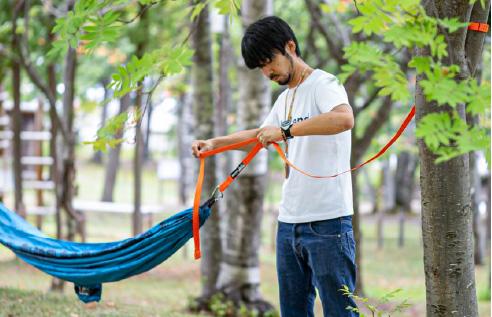
MEDIC First Aid Childcare Plus
Red Cross Snow Safety Rescuer I
RAC Assistant Leader
NACS-J Nature Guide
Care Worker
Born in 1980 in Sapporo. She has experience as a caregiver at a facility for the mentally handicapped and is a woodworking master. In Touma Town, in addition to being a nature experience guide, she is involved in a wide range of town revitalization activities, such as introducing restaurants in the town. Hearing locals say, “There is nothing to do here,” he comes up with ideas one after another to create interesting things to do, and puts them into practice.
